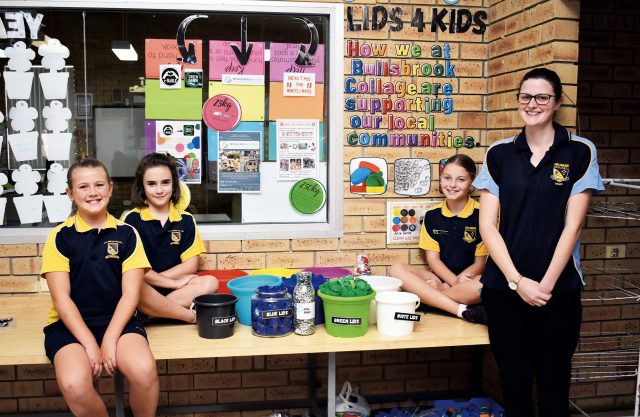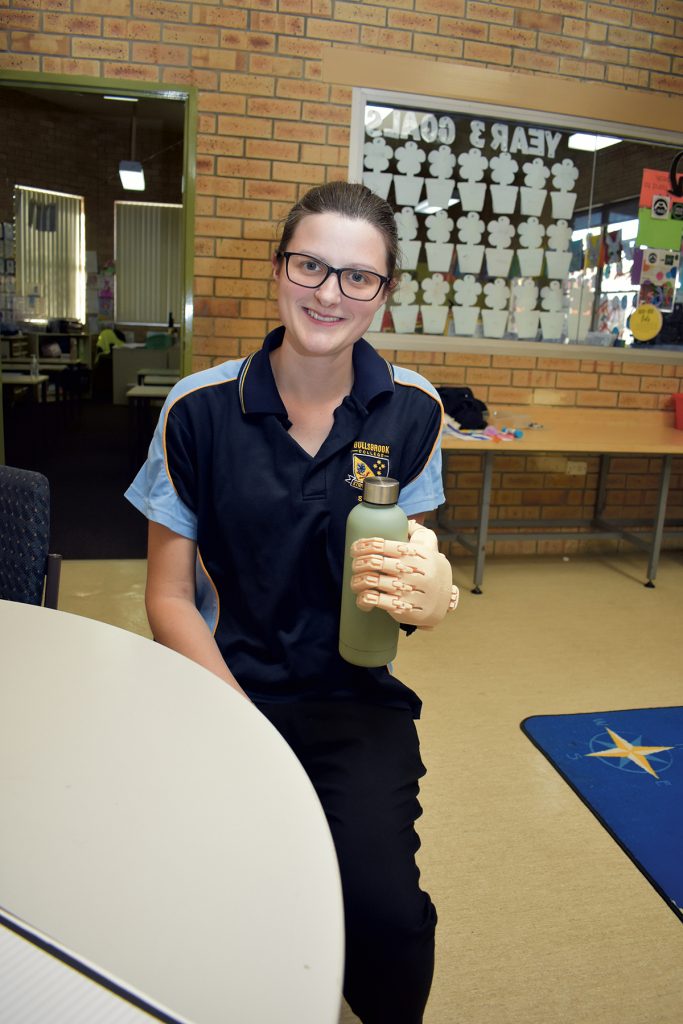
Students at Bullsbrook College are on a mission – to give problematic pieces of plastic a purpose!
Under the instruction of Year 3 teacher Heidi Brough, children have been collecting three key items that are often overlooked in recycling programs:
1. Bread tags – these are passed on to Aussie Bread Tags for sale to recyclers, with the funds raised purchasing wheelchairs for those in need in South Africa.
2. Aluminium ring pulls – used by Wheelchairs for Kids, who sell them as scrap metal and build rough-terrain, fully adjustable children’s wheelchairs from the proceeds.
3. Plastic bottle lids – recycled through Greenbatch, these go on an incredible journey, becoming filament for 3D-printers which can be used to make low-cost prosthetic hands.
Their project has been named Lids 4 Kids and has a close personal connection for Heidi, who was born without a left hand. Heidi has also been the recipient of a recycled-filament 3D-printed hand, built in conjunction with a computer program distributed for free by e-NABLE. e-NABLE is a global network of volunteers who bring their skills together to provide 3D-printed prostheses to underserved populations around the world.
Heidi’s background provided a fortuitous opportunity to create a sustainability project with a clear end goal. When it comes to recycling, often focus is on the process and it can be hard to maintain motivation without seeing results. For these students, being able to see the outcome — and in this case not just the actual prosthesis, but the lived experience of someone who needs one — has had an overwhelmingly positive result on student engagement and participation in the program.
“I wanted the students to see the full cycle of how it works,” explains Heidi. “So often we send stuff off for recycling with no real idea of where it will end up.
“My personal experience has fed into the project and everyone’s been so supportive.”
While a 3D-printed prosthetic will not have the full range of function as a traditional one, it provides an affordable option for those who would otherwise go without. They can be used for simple tasks such as holding a water bottle and helping children balance by allowing them to use two hands to ride a bike, swing on a swing or hold sports equipment such as a cricket bat.
In a testament to Heidi’s dedication to education, her 3D-printed hand was created as part of a project with another school, Ashdale Secondary College, where her mother is a teacher. It was part of an extensive STEM activity, with students using measurements and photographs from Heidi in conjunction with e-NABLE’s software to print and assemble her a hand.
“I personally hadn’t had a prosthetic before – they are expensive! I managed okay growing up, though it took me longer to ride a bike, tie shoelaces etc — opening jars is still sometimes a big problem,” she says.
Costs for traditional prosthetic hands vary widely, from $5000 for one for cosmetic purposes only; $10,000 for a functional one utilising a hook and anywhere up to $100,000 for a prosthetic using robotic technology.
“I’m building up to using it more – I’ve demonstrated to the kids how I can use it to drink out of my water bottle, and I can write on the board – my handwriting is slowly improving!”
While her students may be affectionately critical of her penmanship, they have shown nothing but empathy for herself and those with similar anomalies.
Heidi says, “The kids know they can talk to me about it if they want. They all know that I was born this way and accept that it’s just how Miss Brough is and that we better get on with learning.”








